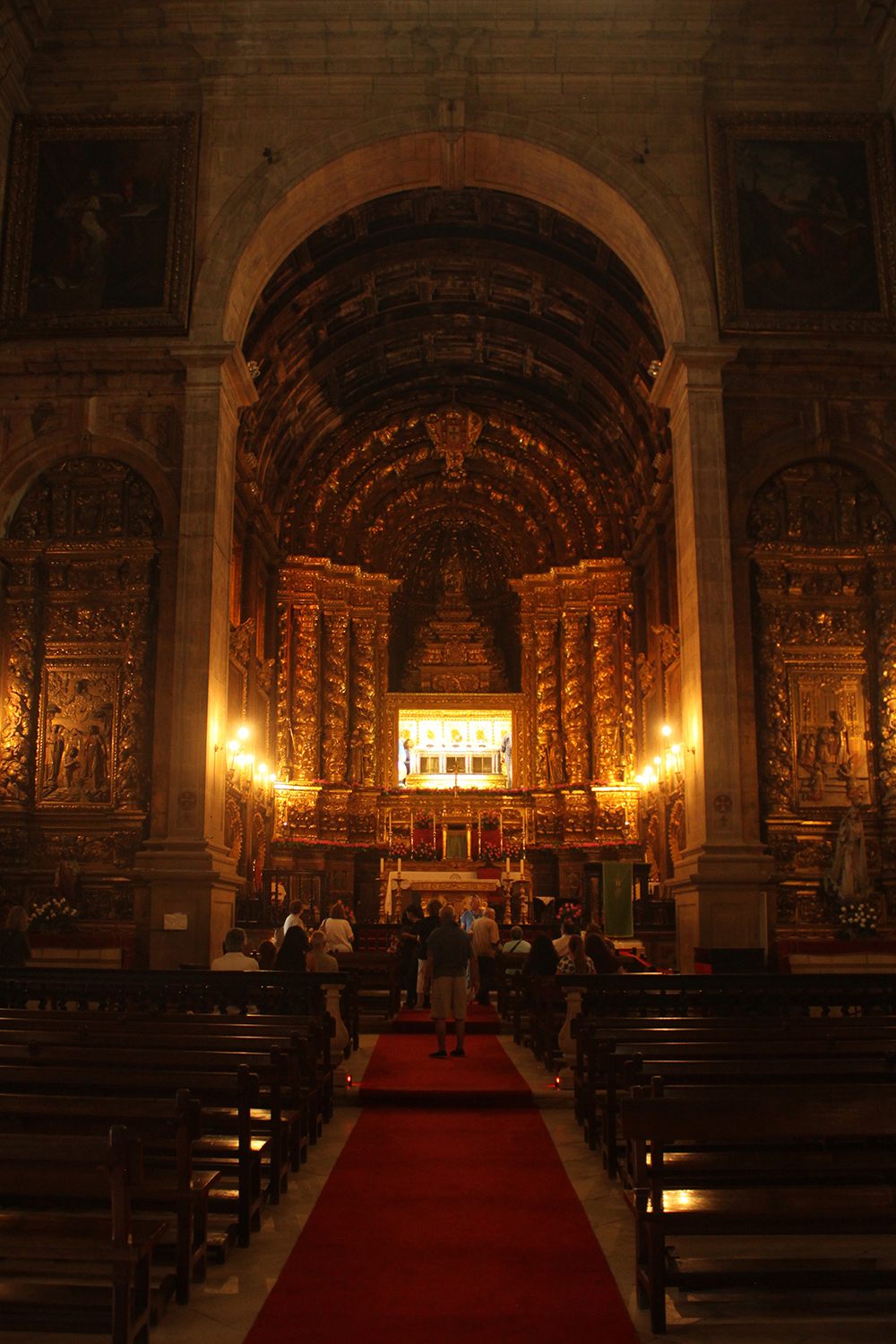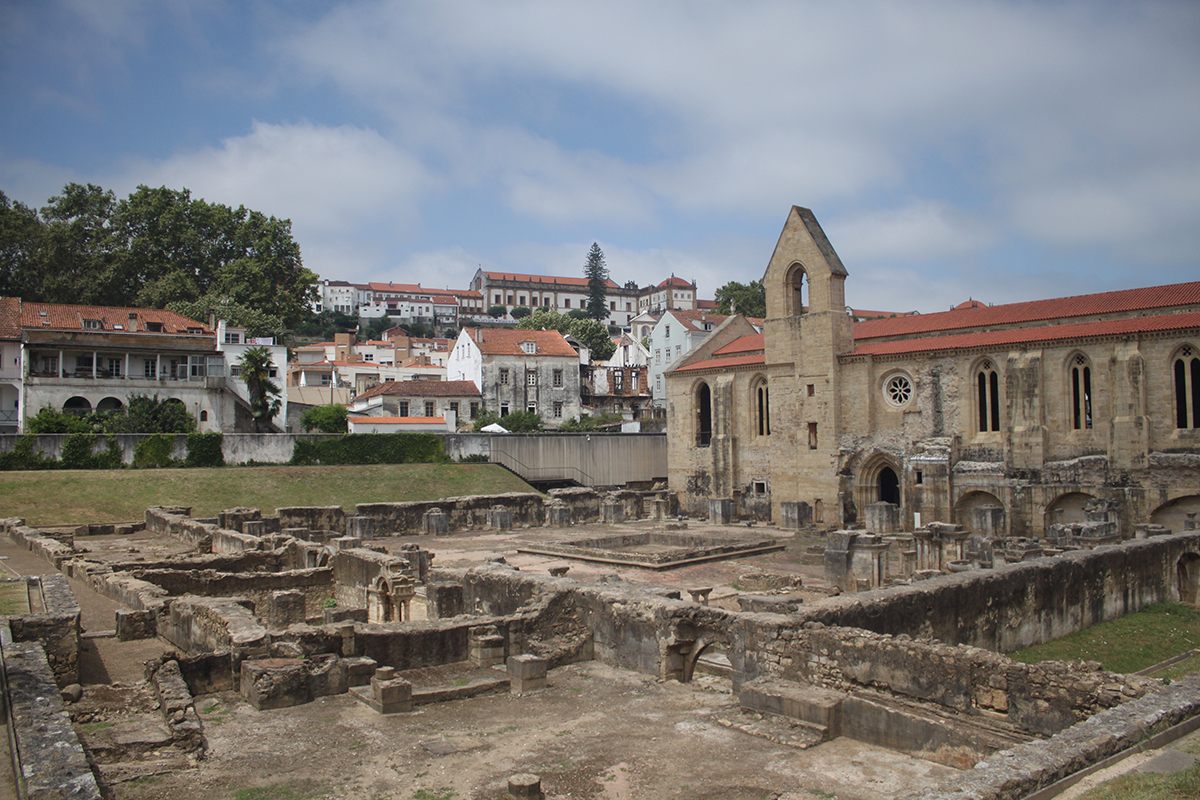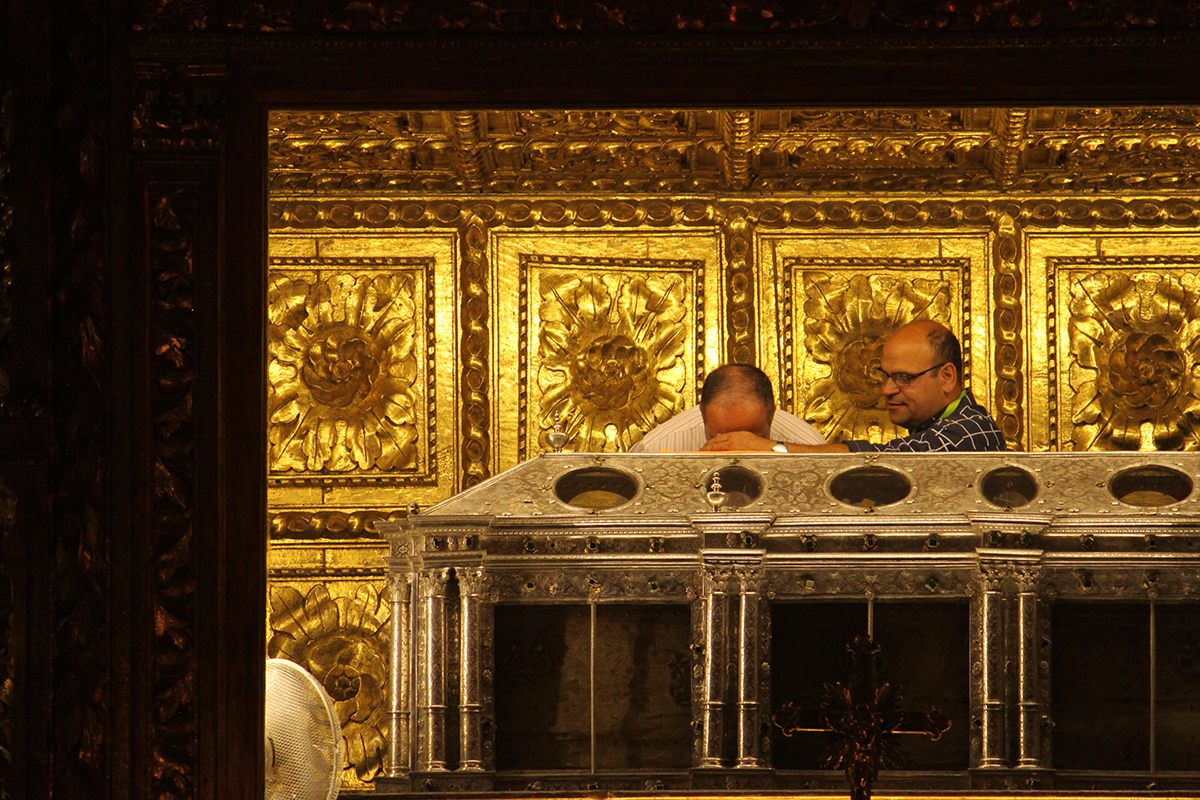This 680-Year-Old Saint’s Hand Has Never Decomposed
Elizabeth of Aragon’s incorrupt appendage is temporarily on view in Portugal.

Elizabeth of Aragon, by Francisco de Zurbarán, c. 1635. (Photo: Public Domain)
Elizabeth of Aragon, a Spanish princess turned Portuguese queen turned Roman Catholic saint, has been dead for 680 years, but her hand—and presumably, the rest of her body—remains impervious to the effects of decomposition. The saint is, either through divine intervention or fortuitous coincidence, what the Church would call “incorrupt.”
For centuries, European royal families have flocked to her tomb in Coimbra, Portugal, to pay their respects, but it requires a special occasion to allow civilians to do the same. Fortunately, 2016 marks the 500th year since Elizabeth’s beatification, and from July 1 to July 13, the faithful are once again allowed to see the queen’s invaluable right hand, which is credited with over 30 miraculous cures.

As you approach the queen’s impressive silver tomb, a warden will instruct you to place your forehead against his hand, and to look through one of the circular glass openings. You will struggle to find a point of reference, and it will feel like looking into a kaleidoscope. The first thing you will notice is a shroud, the print similar to a red-brown damask. And then, you will see her.

Elizabeth of Aragon’s silver tomb in the altar of New St. Clare Church. (Photo: Rafaela Ferraz)
Elizabeth of Aragon was most likely born in Zaragoza, Spain, sometime around 1270. Saintliness ran in her family: her great aunt was St. Elizabeth of Hungary, one of the most venerated saints of the day. As a child, Elizabeth of Aragon stood out due to her piety and devotion, but it was not until her arranged marriage to King Denis of Portugal that she revealed the full extent of her dedication to the poor and sick.
Although, as queen, she took a keen interest in Portuguese politics, she never allowed her newfound status to sway her from her religious path. As her acts of kindness (and occasional miracles) multiplied, the court turned a disapproving eye on her—and, sensing her withdrawal from their marriage, so did her husband.
Elizabeth’s best-known miracle, “the miracle of the roses”, is strikingly similar to one associated with her great aunt. According to the tale, Elizabeth was walking out of the castle one winter morning, to distribute bread to the poor, when she was stopped by her husband, King Denis, who demanded to know where she was headed. Knowing he would disapprove of the loaves she carried in the folds of her dress, she told him she carried only roses. The king considered it unlikely that she could be in possession of such a volume of roses in January, and told her so, which prompted the queen to unfold her dress to reveal dozens of flowers.

Inside the New St. Clare Church, Coimbra, looking towards the altar. (Photo: Rafaela Ferraz)
Elizabeth was widowed in 1325, and afterward retired to the St. Clare Monastery she had founded in the city of Coimbra. She left the seclusion of the monastery only once, in 1336, when her son, King Afonso IV of Portugal, marched his troops against his son-in-law, the King of Castile. Elizabeth set out to meet her son in Estremoz, a border town, in the hopes of helping him negotiate an agreement without bloodshed.
Already in her sixties, she did not take well to the journey, and died shortly after her arrival, on July 4th—a date now celebrated in Portugal as her feast day. She was transported back to Coimbra nine days later, where she was deposited in the monastery that she had, for years, called home, in a stone tomb she had commissioned herself.

Elizabeth - also known as Isobel - of Aragon. (Photo: Public Domain)
Not even a year after Elizabeth’s death, the mere proximity to her tomb had already been credited with two healing miracles, a sign that her selfless aura–and her knowledge of medicine, which she had displayed countless times throughout her life–had outlived her. Many more miracle reports followed.
She was beatified in 1516, and canonized in 1625, thirteen years after her tomb was first opened to reveal a sleeping queen, intact and unblemished. Reports from this event describe Elizabeth’s body as “whole and without corruption”, her hair as “blonde and healthy, still attached”, and her face as “very white and well-proportioned”.
Impressed, the Bishop of Coimbra commissioned a new silver and glass tomb in which to display Elizabeth’s preserved body. However, his vision, which would have firmly placed the holy queen in the company of countless others who refused to decay in full view of churchgoers, was only partly accomplished.

The ruins of Old St. Clare Monastery, where Elizabeth of Aragon lived in seclusion as a widow, with New St. Clare Monastery, where her incorrupt body currently rests, visible in the background up the hill. (Photo: Rafaela Ferraz)
Elizabeth was moved uphill to the New St. Clare Monastery in 1677, due to increasingly severe floods in the Old St Clare, where she had first been laid to rest. It was here that she was placed in the silver tomb we see today—but the only part of her body left visible to onlookers, peeking out of the burial shroud, was her right hand.
I am told Elizabeth of Aragon still rests inside that silver tomb, though she is mostly shielded from my eyes. It doesn’t seem to matter to the dozens of people ahead of me, waiting patiently in line for a glimpse at a saint’s incorrupt hand.
On these rare open days, the atmosphere around the holy queen’s tomb is both somber and nostalgic, as if all of these people—mostly pious women, the age Elizabeth was when she died—are simply returning to visit an old friend. Some place kisses on the intricate surface of the tomb. Some press fresh roses against the silver, discreetly, before walking out with these newly blessed trophies.

A man peeks into the silver tomb, hoping to catch a glimpse of Elizabeth of Aragon’s incorrupt hand. (Photo: Rafaela Ferraz)
The wardens are bored by these displays of affection for a dead woman, it seems. I merely look through the glass, and attempt to locate the dead queen within the confines of this highly polished silver box. Then I see it. One moment it’s there, the next it isn’t, the light playing tricks on me. It’s a hand, alright.
The fingers are slightly bent. The wrist, relaxed and poised, protrudes from a fold in the burial shroud. I am more and more inclined to trust the 1612 reports on this woman’s postmortem state.
As far as hands go, this one really is very white and well-proportioned.













Follow us on Twitter to get the latest on the world's hidden wonders.
Like us on Facebook to get the latest on the world's hidden wonders.
Follow us on Twitter Like us on Facebook